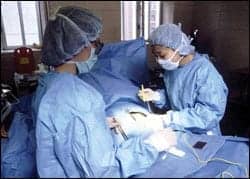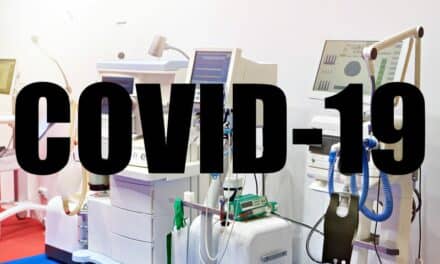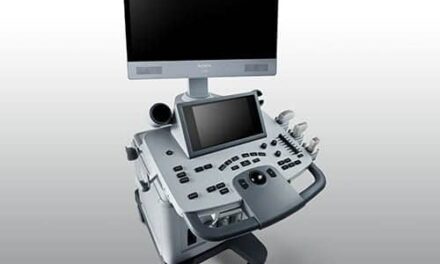 |
| ESUs convert energy into a surgical tool, one that can cut, cauterize, and/or coagulate tissue. |
Harnessed electrical energy can be an efficient and effective surgical tool. Electrosurgical units (ESUs) channel this energy and convert it into a surgical tool that can cut, cauterize, and/or coagulate tissue, or perform some measure in between. In some hospitals, ESUs are used at the beginning and end of most surgeries, but the consequences of a malfunctioning ESU can be grave. Severe patient and user burns can result from improperly grounded electrical pathways, and fires can start if used too close to oxygen. Fortunately, however, such incidences have become rare.
Advanced technology recognizes incomplete circuits and prevents the machine from delivering power when the return circuit path is not functioning. This decreases the potential for burns, while nonflammable materials reduce the risk of fires. The advent of these improvements has permitted individual clinical and biomedical engineering departments to develop service and maintenance programs for electrosurgical equipment that are better matched to their schedules and needs. Some, such as John Gross, CBET, biomedical systems engineer at St Patrick Hospital and Health Sciences Center, Missoula, Mont, perform preventive maintenance (PM) every 6 months. Others, like David Ashley, clinical engineering support specialist with Baystate Health System, Springfield, Mass, perform PMs only during service calls.
Whatever the schedule, most biomed departments handle the majority of electrosurgical equipment service and maintenance in-house. At St Patrick, all electrosurgical unit problems are repaired by the in-house biomeds, according to Gross. Ashley estimates that 90% to 95% of ESU issues at Baystate are handled in-house. Robert Myers, CBET, PatientCable.com, Detroit, suggests the average may be closer to 80%. “Today, a lot of the newer equipment is OEM-serviceable-only due to proprietary issues,” Myers says.
Even if units must be returned to the OEM, repair of ESU equipment is often not pressing. Many facilities carry extra units to easily swap out devices or entire carts that do not have a functioning ESU. “It’s easy to have a large number of electrosurgical units to simply swap out,” Myers says. “If we’ve got 15 units in the OR, we’ll have at least three backups.”
Put to Good Use
Myers notes that every operating room in the hospital has an ESU as well as each general surgery suite. At St Patrick, each operating room also has its own unit. “We have 11 rooms and two or three extra units,” Gross says.
Ashley reports that Baystate’s inventory is very likely more than 100 units, which are used in the surgical suites and in labor and delivery.
Most inventories include both types of electro-surgical modalities (monopolar and bipolar) as well as a number of accessories, such as foot pedals, pencils, forceps, electrodes, and/or smoke evacuators.
Ashley believes the overall use of electrosurgery equipment is decreasing as a result of the growth in noninvasive procedures and specialized modalities like the ultrasonic scalpel. But in traditional surgery, ESUs remain popular.
Many physicians make the first incision with the unit in cut mode; they then use it in coag mode to close. In between, the device can be used to assist with various aspects of the procedure. “In plastic surgery, the electrosurgical unit can be used to destroy unwanted materials such as excess fat. In cardiovascular procedures, it can be used to ablate nerves in the heart that cause arrhythmias,” Myers says. He estimates that the device is used in about 90% of surgical procedures.
ESU Components
Monopolar devices incorporate the patient into an electrical circuit that is initiated by the radio frequency generator. In monopolar units, current flows from the electrosurgical generator, to the surgical device—the pencil, for example— into the patient at the point of contact with the instrument, out of the patient through the return electrode module, and back to the generator.
Bipolar units keep the circuit within the instrumentation. The energy flows from the generator to the electrosurgical device—tweezers or forceps, for example—whose tines act as the active and return electrodes, cycling the current back into the generator.
The use of radio frequencies to perform the procedure generates the necessary energy to complete the task with a minimal risk of neuromuscular stimulation and no risk of electrocution, according to ValleyLab’s Principles of Electrosurgery.
Less power is needed for coagulation procedures than cutting. ValleyLab’s Force FX features monopolar coagulation modes at 120 watts; cut options range from 200 watts to 300 watts. The CEM mode reduces those to 70 watts and 100 watts, respectively. Bipolar modes operate at 70 watts. Ashley notes that many units will produce options that fall in between cut and coagulate.
“These outputs are derived from an algorithm,” Myers says. “The generator produces a waveform that will actually cut flesh. It also produces the output needed to coagulate blood.”
To ensure that the circuit is properly functioning and to reduce the risk of burns, today’s units feature the return electrode module, or REM, through which the energy flow is directed out of the patient and back to the generator. If this return path is blocked, then there is a risk of serious burn to the patient or users. Ashley recalls an incident at a Florida hospital where the physician received a second-degree burn from the bed rail when a patient was improperly grounded due to a bad pad.
Many of today’s models subsequently feature an inner control that prevents any electricity from flowing if the REM is not functioning properly. The incidence of burns has therefore decreased. “It’s fairly rare to get an alternate-site burn now, but it does still happen,” Gross says. In addition to the immediate tissue or organ damage caused by the burn, such an error can result in increased scar tissue and longer healing time.
Other potential negative consequences resulting from the use of electrosurgical equipment may include long-term effects resulting from the inhalation of toxic smoke (viral DNA, bacteria, carcinogens, and irritants may be present in electrosurgical smoke) and immediate unpleasant effects, such as odor. This impact can be moderated, and in some instances eliminated, with smoke evacuators.
At St Patrick’s, only one physician chooses to use a smoke evacuator (during his bypass surgeries, according to Gross). At Baystate, Ashley reports two models in the inventory: one for the operating room and another portable unit. “It’s not standard equipment,” Ashley says.
Meyers has seen the opposite, working with facilities that use them routinely. “Smoke evacuators are standard,” he says. “Some models engage only when they sense the energy flow and so are not constantly running. Others run continuously to remove the plume from the surgical field, ensuring that a clean and healthy environment is maintained for the surgical staff.”
Help from Your Friends
The surgical staff will play a role in the service and maintenance of electrosurgical devices, particularly in terms of identifying problems and notifying biomeds about the need for service. “Users can report a number of problems, including power cord frays and power plug damage. Another common complaint is that there is no power,” Gross says.
Users also alert biomeds to power differentials, “complaining that the power is too weak,” Myers says, or sound problems such as speaker crackling or no volume.
Users may also perform some troubleshooting themselves. “Users handle the externals and disposables,” Ashley says. “For instance, the user will make sure the foot switch is connected properly or will swap out a malfunctioning pencil or grounding pad.”
For more complex problems, the user also can play a role in troubleshooting by providing detailed information regarding the problem. Without user guidance, most biomeds will begin to troubleshoot by performing a PM program. Therefore, a biomed’s familiarity with the users as well as the equipment itself will lead to more rapid diagnostics, Gross suggests.
“The best advice I can give is twofold,” Gross says. “First, make sure you know the people using the devices. You’ll want to find out from them what is going on with the equipment. And second, be really familiar with how the machine should operate.”
It can, however, be a challenge to obtain information directly from the user. Because equipment is swapped out immediately, there is no rush to call the biomed department and there may not be a good record of the complainant or the specific issues. “If a problem is a user-related error, we don’t see it firsthand unless we happen to be in the room when it occurs—which doesn’t happen very often,” Ashley says.
User information can direct the order of troubleshooting. For instance, if the user has complained about the foot switch, Ashley will hook the foot pedal up, check it for physical damage, and replace it with another. If the second foot switch does not work, Ashley would next investigate the relay. Eventually, he will have completed a PM.
Checking the List
Fortunately, a PM check does not take a very long time. Gross estimates it takes about one half to 1 hour. In most cases, the biomed will perform a PM check as part of service, even when the problem has been pinpointed by the user.
“Before you return the device to the customer, perform a full check to make sure it is doing everything it is designed to do properly and safely,” Ashley says. “Is it delivering the right amount of energy in the different settings? Does it pose any potential hazard to the operator or patient?”
Gross suggests that manufacturers’ instructions will specify exactly what to check during a PM. “Generally speaking, you are looking at the power output, RF leakage, and the REM,” Gross says. Resistance and voltage tests are often used to complete these checks.
During the PM, the biomed should also inspect the general condition of the unit. There should be no loose switches, no breaks in insulation, no broken fuse cap; all externals and connectors should be in the appropriate places; carts should be in good shape—wheels functioning properly, for example—and the devices themselves should be clean. “You want to avoid cross-contamination, which can cause infection; and leaked fluids, which can cause equipment failure,” Ashley says.
Myers concurs that PMs can eliminate a lot of problems. He believes that annual checks are supported both in the government and the private sector.
Ashley has taken the opposite approach and does not advocate regular PMs for the Baystate facilities. “Up until about 5 years ago, we performed annual PMs on the electrosurgical equipment—checked the output, connectors, cords, etc—but the effort became impractical with the overwhelming number of life control and support machines used in the OR which require more attention,” Ashley says. Because the devices can be so easily swapped out, PMs are primarily performed on an ESU when the device needs service.
Common Service Challenges
Whatever the frequency of PMs, however, ESUs do not generally have a lot of problems. Ashley thinks service calls average about two to four per month. Gross estimates about 10 ESU-related calls per year outside of PMs.
The most common problems are related to the foot pedals. Issues can be tied to damage, improper connections, user error, dirt (biomeds use descriptive terms such as goo and gunk), and abuse. They may be kicked around (literally) or inadvertently placed under heavier orthopedic equipment sharing the same cart. “We can rebuild or replace the foot switches,” Ashley says.
The second most common problem Ashley sees is REM failure. “We have an REM simulator which helps to determine whether the REM is working properly,” he says. “The device is calibrated to emulate human skin. If they fall out of calibration, we open the machine, replace the REM circuit, reassemble, and test to verify the calibration.”
Myers suggests that the appropriate test equipment is key to identifying these types of problems. “You want options to test different loads,” Myers says. Self-tests—designed to catch similar problems—can also register problems from any adverse characteristic such as a depressed foot switch.
Mechanical items can naturally pose some problems. Myers has seen banana jacks wear out from use. Gross has seen touch pads and buttons fail. Electrodes are typically disposable, so problem pieces can be merely thrown away and replaced, but Ashley recommends a quick inspection when new electrodes are removed from the package. “Users should look for exposed wires, which can cause a malfunction,” Ashley advises. Reusable wiring can be tested. Cables can be sterilized and repackaged for use. Pads used for the return electrode module are disposable.
Displays and monitors should be checked for calibrations, wear and tear, and interference. “If something is wrong with the shielding in the video monitoring, you can get fuzz resulting from the radio frequency, so precautions should be followed when installing video systems to avoid this interference,” Myers says.
Speakers may also need attention. “The devices do deliver an audible tone when keys are depressed, and you can hear the amplifiers for the speaker when they are going out,” Myers says. Information about this will typically come from a user.
More serious problems can be tied to the microprocessor, output transistor, or some other proprietary technology. These are often referred back to the vendor, but the more often the repairs can be made in-house, the more often they will be. Education, both for biomeds and users, can be helpful in reducing any issues. Gross often tries to get his new team members into surgical procedures, preferably open heart, to see how the equipment works firsthand. “It’s a good experience not only for the biomed to learn about the electrosurgical equipment, but also all of the other devices present in the room,” Gross says.
 |
Looking for electrosurgical equipment? Find it in our |
The biomeds frequently remember that experience for a very long time. Users may not retain their information for as long. “Occasionally, information is disseminated to the users, but they relapse after 6 months or so,” Gross says. For the most part, however, Gross reports that programs run through the clinical educator used at St Patrick work well.
In general, biomeds do not report a significant amount of trouble with ESUs or their users, despite the ubiquity of the devices in medical institutions. With onboard controls up, medical errors are down. When biomeds do find trouble, or have it reported to them, they tend to fix it themselves, relying on OEMs solely for complex and proprietary repairs, but they also benefit from the reliability of the devices. Patients and practitioners profit from the advanced technologies that harness electrical energy in a more efficient and effective manner than earlier models.
Renee Diiulio is a contributing writer for 24×7. For more information, contact .





